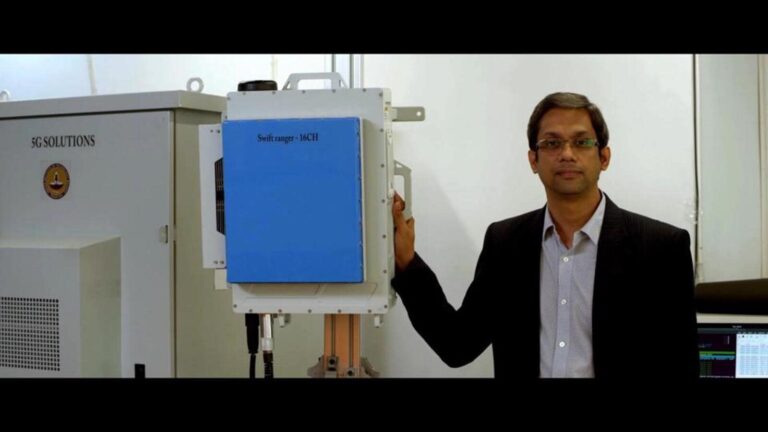August 27, 2024 11:25 AM
Researchers from IIT Madras discuss efforts to achieve standards for 5G coverage in rural India and develop local 5G base stations.
Radha Krishna Ganti of Indian Institute of Technology Madras, one of the recipients of the Vigyan Yuva Shanti Swarup Bhatnagar Award in Engineering Sciences, will discuss efforts to achieve standards for 5G coverage in rural India and develop local 5G base stations.

what i do
For every generation of cellular system, the requirements and evaluation criteria are decided by the International Telecommunication Union (ITU). When 5G requirements were being decided globally around 2011, rural broadband coverage was not part of the definition of 5G. Through the Telecommunication Standards Institute of India (TSDSI), Ministry of IT and Department of Telecommunications, we spearheaded the effort to include rural coverage as one of the key performance indicators of 5G. We have also built an end-to-end 5G testbed with all components (except chips) developed indigenously.
manner
We defined a new test environment called Large-cell-Low-Mobility (LMLC) that leverages the BharathNet network to explore broadband connectivity in rural areas. LMLC was approved by ITU for inclusion as a mandatory feature in IMT 2020 (the official name for 5G). This work is now being extended by India to 6G. We also developed an Indian standard, 5Gi (an alternative to 5G), which was approved by ITU globally and later merged into 5G.
During the development of 5G, we realised there was a lack of testbeds and prototypes for wireless research in India. Eight institutes proposed to DoT to set up a 5G testbed, with IIT Madras as the overall integrator for key subsystems.
The solutions we have developed over the past four years are now being deployed on our campuses and used by startups to further develop their wireless technologies. This technology has also been transferred to Tejas Networks and CDOT to be integrated into their products.
My research group is working on several other projects, including using artificial intelligence and machine learning for next-generation wireless systems. We are currently working on new algorithms to improve the performance of next-generation wireless systems. We are designing new hardware architectures to build higher-performance, lower-cost radios. We are also working with the military to understand how 5G systems can help them in their work.


